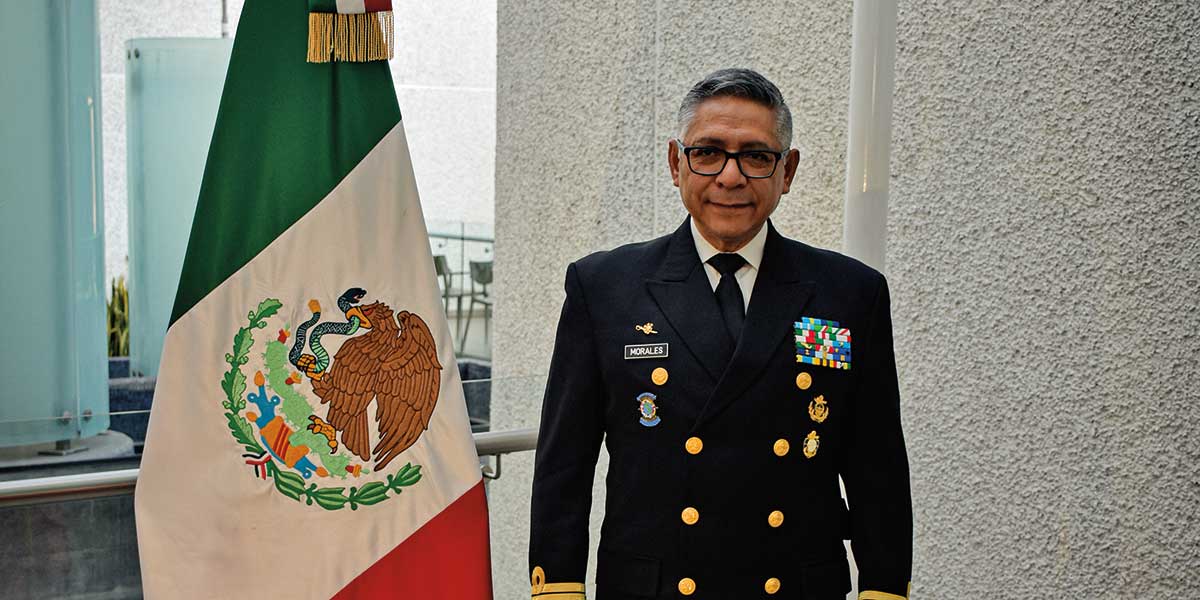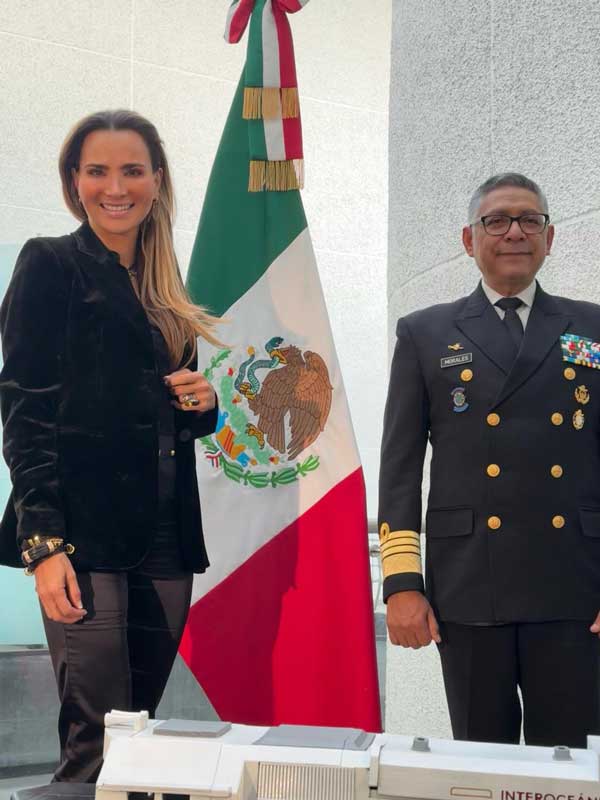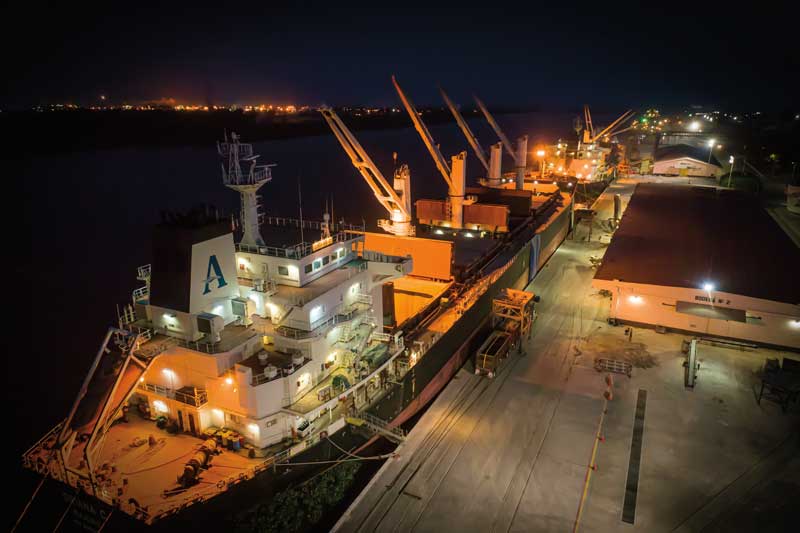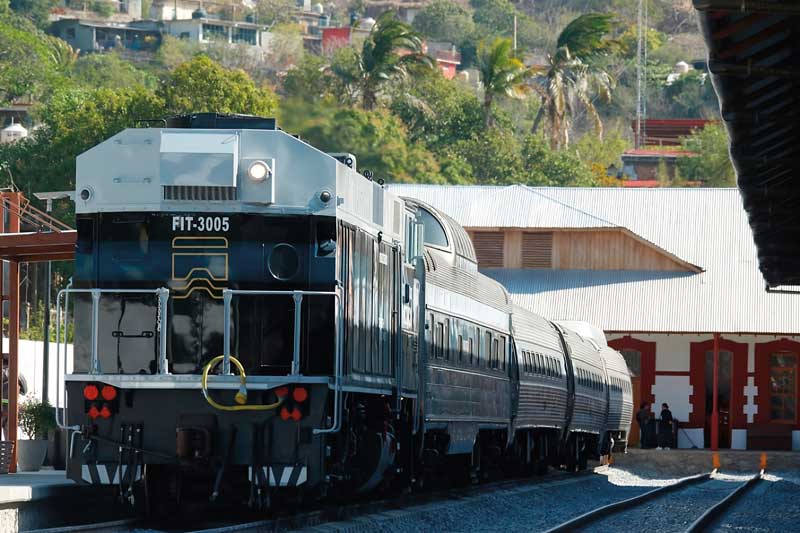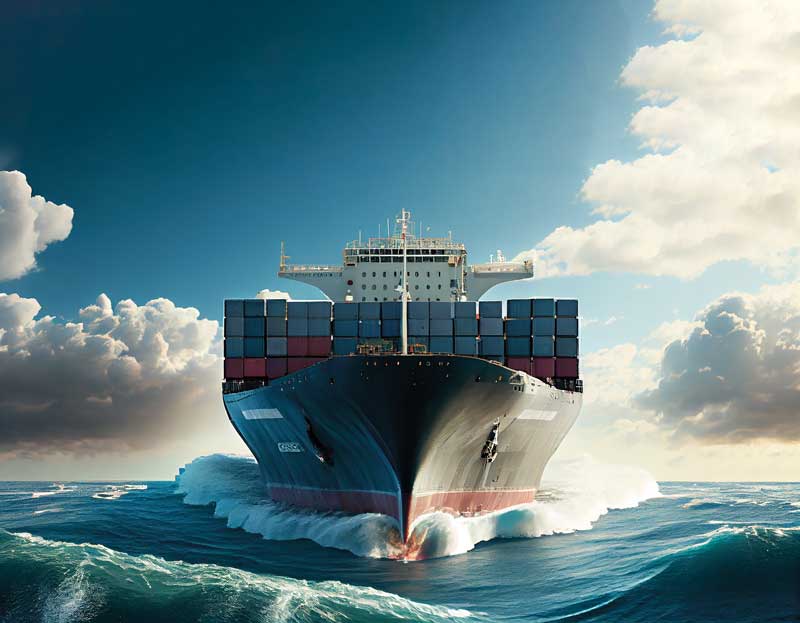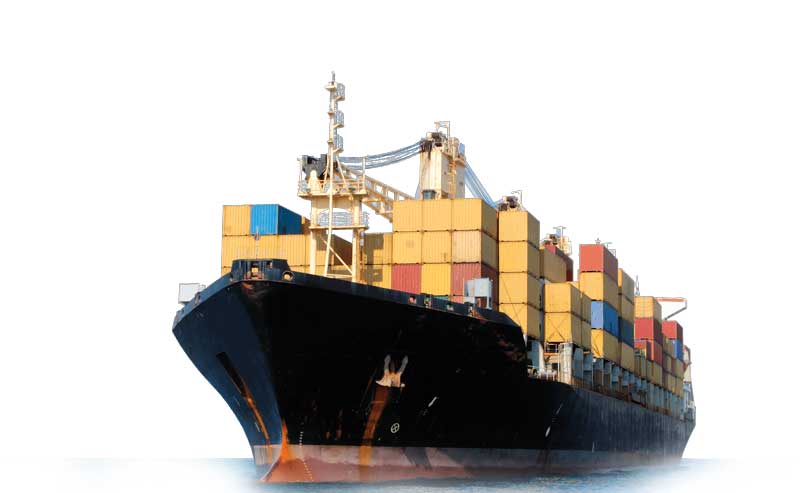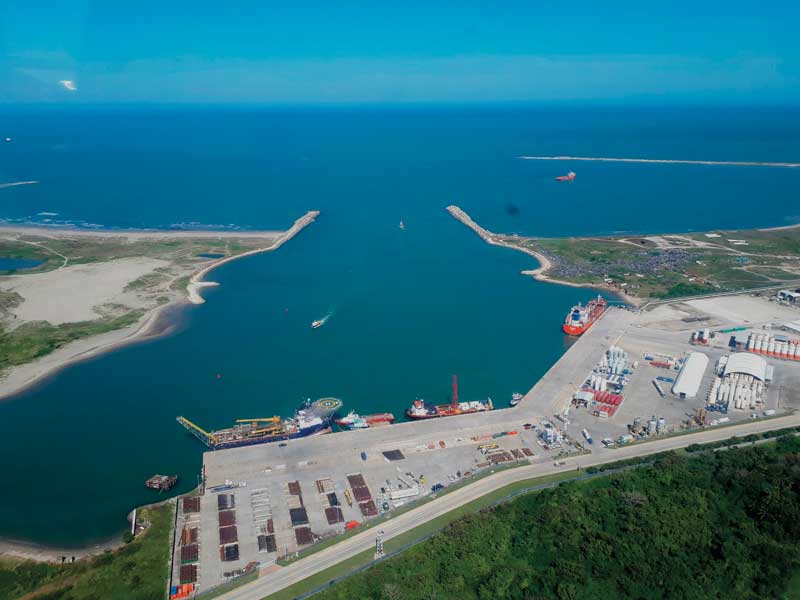In an interview with Real Estate Market & Lifestyle, Admiral Raymundo Pedro Morales Angeles, General Director of the Interoceanic Corridor of the Isthmus of Tehuantepec, provided a broad overview of the project, its progress, challenges and opportunities, both for the region and the country.
Gisselle Morán (GM): What are the main objectives of this Corridor?
Admiral Raymundo Pedro Morales Ángeles (RPMA): The main objective of the CIIT is to implement a multimodal logistics platform that uses the capabilities of the ports of Coatzacoalcos (Veracruz) and Salina Cruz (Oaxaca), complemented by Puerto Chiapas (Chiapas) and the Dos Bocas port (Tabasco). This platform will be connected by nearly 1,200 km of railways to link the oceans. It is not only the train, it is maritime power, we are talking about trying to promote maritime trade, the exchange of goods between Asia, the United States and Europe.
GM: And at the same time taking the four borders that will allow access to the north.
RPMA: It gives us access to the North, to the Atlantic, to Guatemala, to Central America, and to the Pacific.
GM: What is the current status of the project?
RPMA: We have completed Line Z from Salina Cruz to Coatzacoalcos. We are carrying 100% of the freight and passengers; we still need a second phase on Line Z, which has to do with more stations, with a railway complex that will allow the Corridor to be connected to Matías Romero, and we need to finish the rail from Coatzacoalcos to Palenque; we have 50% of the line there and we hope to finish it in July. We will be operating from July, but not at 100%, and we have scheduled the inauguration of the other line, which goes from Ixtepec to Ciudad Hidalgo with a branch to Puerto Chiapas, in a first stage on September 14, the day Chiapas was annexed to Mexico.
GM: How long does it take to build what we have today in the Corridor?
RPMA: Construction began in 2021. We had to solve some social problems, we had to give more information to the population so that they would accept the projects; we worked intensively for a year and a half.
GM: Who has supported this work and this project?
RPMA: All government agencies: Pemex, CFE, Sedatu, Treasury, Communications and Transportation, the entire federal government, the state governments with great enthusiasm from the governors of Oaxaca and Veracruz, as well as those of Tabasco and Chiapas. In addition, we have the support of the municipalities, of the mayors, who are very interested in bringing jobs to their communities and improving the quality of life,because,by the way, it is not only infraestructure works, we have also given the inhabitants urban improvement works, community support; we have provided more than 10,000 housing grants, we have invested many resources in infrastructure that also improves the quality of life of the population; we have managed to build schools where there were none. The first stone has just been laid for the Tecnológico de Palomares, a very small town in Oaxaca that will now have a Tecnológico. In addition, the universities, the Tecnológico de México, are all investing to generate the human capital that will be required to invest in the development poles.
GM: Is this a project in which all the stakeholders, all the interest and powers of the country are aligned?
RPMA: Of course, both at the government level and at the private initiative level. We have a lot of acceptance from the latter, and even at an international level there is a lot of interest; we have had visitors from all over the world. We are about to receive a visit from Portugal, from the Port of Sines, which wants to be twinned with the Port of Coatzacoalcos; there is interest in coming from the Arab Emirates, they want to come from all over the world to see the Corridor and we have, for the time being, an important advance in the development poles, because we hace already assigned four: Coatzacoalcos 1 and 2, Texistepec and Salina Cruz. We are inviting to tender for three more, and another one that will be granted to a Danish company that is planning a very important clean energy program, they are going to generate green hydrogen from hydrolysis with solar and wind energy, to produce ammonia, which is the fuel of the future. This company is bringing an investment of about $10 billion; that is the level of investments in the Isthmus.
GM: What is the amount public investment in this project over six years?
RPMA: The investments are based on the Program for the Development of the Isthmus of Tehuantepec, there are investments in the Salina Cruz refinery for the coking plant, in the ports, in the highways, in the railroads; we do not have the full amount, but it is more than 70 billion pesos.
GM: Is this the main transexennial project of the last decades?
RPMA: There are other projects such as Plan Sonora, which is a very important project in terms of solar energy and the Mayan Train, among others, but the advantage of the Interoceanic Corridor is its geostrategic location, because it is located in the narrowest region of our country; it is not a project that only has a commercial vision, it also has an important social vision that seeks to improve the quality of life of the inhabitants and that makes it different.
GM: How many communities and people are beneficiated by this project?
RPMA: We have 79 municipalities in the interoceanic crossing alone, but in total there are more than 120 between Tabasco, Veracruz, Oaxaca and Chiapas, the entire southeast, but in addition we bring more than 3 million inhabitants. The size of our region is larger than Holland and Costa Rica. The impact is veryimportant, and it is in a region of people who are very marginalized and so any benefit we bring is immediately noticeable.
GM: Is that why you also build housing, schools to train them so they are readu for employment?
RPMA: Yes, one of the main observations that companies that want to invest make to us is human capital. We tell them that we have a large number of engineering degrees, a large number of students at a technical level, they are surprised, they do not believe it about the Isthmus of Tehuantepec; however, much is missing in the educational area. That is why we are asking the companies, first, to be linked to education, that there ir a program of company that is going to invest, it is a requirement within the application, in such a way that there shall be no doubt that we are going to have qualified local labor; because it is not about having large industries bringing labor from outside and the locals continue as workers, but to make them also join in. As I say: '"Let them get on the train" and not watch it go by.
GM: What is the economic impact you are having?
RPMA: To give an example: the country is growing at 3%, the southeast is growing at 6% and Oaxaca in particular, 13%. The case of Oaxaca is very notable, I remember how it was two years ago and today I see it with a different face; we have improved, built infrastructure, streets, sports units; we have fixed up their schools, which is not the main function of the Corridor, but it is necessary to incorporate the population into this great work.
GM: The railroad already running every day, how much is it operating in terms of cargo?
RPMA: We still move little cargo, we still have to finish from Coatzacoalcos to Palenque, where there is an important demand, and to Guatemala. However, our goal is to reach around 2 million tons of regional cargo per year and to start with about 100 thousand containers per year in interoceanic cargo.
I hope that in a couple of years we will be 100% ready to achieve that goal, but we hope to reach our break-even point in terms of investment and operating costs by next year at the latest.
GM: What are the main sustainability challenges facing the Corridor?
RPMA: In sustainability, water, and we have to be very careful. We have water, which is an important resource, but we have to make sure that the water that is used and filtered into the ground is without human contact to avoid contamination of the groundwater. Another important issue is waste, because when the industry comes, where we will put the waste; we are working with the governments of Oaxaca and Veracruz to use this waste industrially and avoid a public health problem. On the issue of sustainability, on the issue of progress, our challenges are to attract investments. There are many companies that are interested, but we need them to settle down, to start investing. There is a Development Pole, Texistepec, from PROISTMO, which offers that by the middle of the year at the latest they will start working.
GM: We have been told that it is a reliable and dependable company.
RPMA: All the companies in the Isthmus are reliable, and PROISTMO in particular has very innovative projects, such as a control system for high-energy studies. This control is an area of physics that allows the development of research projects for almost everything, in medicine, metallurgy, etc.; it's not that easy, I think it will take about 8 years to implement it, but they will achieve it.
GM: Around all the poles, as in Texistepec, what else is coming?
RPMA: We have the green hydrogen system in Ixtepec, Oaxaca; the green ammonia pumping plant will be located in Salina Cruz. We have a Development Pole in Mixtequilla, where perochemical-related industries and industrial warehouses will probably be established. We have another property in Chivela, in the municipality of Ixtaltepec, Oaxaca, a place for maintenance of aerochargers and areas such as aluminum recycling, alternatives of that type, could also enter. We have other agroindustrial areas, two Development Poles in Chiapas that are 100% attached to agroindustrial ports; these have not been auctioned, we are finalizing notarial matters and I hope that the deeds will be delivered soon so we will be able to put them out to bid.
GM: Speaking of deeds and the rule of law, how much certainty is there for investors?
RPMA: All the certainty. Absolutely. We have a business model that guarantees that businessmen who win a a concession will be able to sell the land once they have fulfilled the investment promises they have made. Why didn't we sell them it directly? Because we don't want speculation. If we give a company a property, we want them to make a major investment in two years; if in that period the company achieves an investment in such a way that it is better for them to stay than to leave, we will sell the property to them. What are we doing right now? We are freezing the price and only updating it with inflation; then they do have certainty.
GM: What can you tell the world about why to invest in Mexico?
RPMA: First, to take advantage of the geostrategic condition of the Isthmus; second, nearshoring is the opportunity for the world because we have the connection between Asia, the United States and Europe through a multimodal corridor where we easily beat Panama by 20 days in the transfer.
We have a rail yard in Coatzacoalcos with a capacity of 135 cars. We also have tax incentives that guarantee the investor not to pay ISR during the first six years, in addition the VAT between companies that are located in a Podebi or between poles is zero; likewise, we are going to give the opportunity to establish a Customs Center as strategic customs enclosures that allow the transfer of goods only in transit, without problems crossing. Making the whole logistic chain more efficient, having control, of course, but with ease for interoceanic cargo to be transparent. In addition, we are about to close a Mimex company (Multimodal Interoceanica Mexicana), a company with a single window for ships bringing cargo from Asia, arriving in Salina Cruz and crossing to Europe or the United States, so they do not have to be dealing with five or six customs. That makes it a lot easier.
We have guaranteed water for the entire development of the Isthmus, we have electricity, fiber oprics; we are laying a three-tube line of 144 fiber optic lines, which runs parallel to the train right-of-way; we have natural gas, a 12-inch pipe and two repowering plants are being completed to guarantee the consumption of the Salina Cruz refinery and the consumption of the areas, and we will have around 30 thousand cubic meters left; we are covered for at least 8 years and when capacity is equal to demand we will be ready to expand it.
GM: How much electricity does the CIIT have?
RPMA: There is The project has a surplus of electrical energy. electricity. We get it from two sources, one that comes from the hydroelectric plants in Chiapas, and the other from the wind farms, which is clean energy; we have enough electricity. Even the company that is going to work with green hydrogen is going to generate a lot of energy, it will be under an isolated self-supply scheme to guarantee that it is 100% clean.
GM: What is being done in the ports?
RPMA: In the Port of Coatzacoalcos, in the Pajaritos Lagoon, we are developing a specialized container terminal, but first we depend on a multi-use terminal, which we have already put out to tender, reaching 300 thousand TEUs of 20-foot containers. When it reaches a certain equilibrium, we will develop a specialized terminal in Pajaritos with a capacity of 1,400,000 containers, so that we can capture enough cargo in the interoceanic crossing. We are building rail and road access to this terminal so that it will have no limitations. In Coatzacoalcos we cannot grow much, there is a tunnel that crosses from Pajaritos to the Port of Coatzacoalcos and we only have a maximum draft of 14 meters, which is enough for cargo of a certain depth.
GM: And it cannot be 20 meters?
RPMA: It is not possible because there is a tunnel underneath, but in Salina Cruz, which is an old commercial port that gives us capacity for 300,000 containers and has rail and road access, we are building a new port where we have built a 1,600 meters long breakwater, with 25 meters deep; we have put about 7 million tons of rock there. This breakwater is already finished, it will soon be inaugurated by the President, and a specialized container terminal will be built there, parallel to the Salina Cruz terminal, thus allowing this double interoceanic crossing, but in addition to that, a green ammonia terminal will be established in that new port. This port is going to be one of the deepest in the world, with an entrance between 24 and 25 meters deep and at the dock between 22 and 24 meters. But the port also has a very large development plan towards Punta Conejo, which is towards the north, and there it can grow until it is compared to the Port of Manzanillo, a very important port.
GM: When will this be completed?
RPMA: Within five years.
GM: Are we building a port for the world?
RPMA: A hub. We are about to publish new customs rules for this type of goods that come from Asia and that can be given added value in Mexico, to later be exported; those goods will have special treatment because this kind of goods do not stay in Mexico, they simply enter and pass.
GM: Will this be a free port one day?
RPMA. It is actually a free port because there are tax zones.
GM: How will the security of all these goods be guaranteed?
RPMA: We have four levels of security. The first is the private security that the companies have, including the railroad, which is a public company but that hires private security for access control issues and proximity; The second level is carried out by the state and municipal police, they are the first force there and from there we have the National Guard and the Secretary of the Navy. The Navy has deployed more than 3,000 elements; we have established naval stations in strategic areas, one in San Juan Evangelista, another in Texistepec, in Matías Romero, one in Medias Aguas, in Ixtepec, in Tehuantepec, in addition to our bases in Salina Cruz and Coatzacoalcos. We are completely armored.
GM: In terms of migration?
RPMA: Migration is an international challenge and Mexico is no exception. Regarding the Corridor, we have to implement certain measures, given that people from Central America who want to reach the USA pass through there. We don't have so many problems with passenger trains, the problem is with freight trains, that is where most of the people get on. What are we going to do? We are going to confine the yards and once the train is in transit, and has already picked up a certain speed, it is very difficult for them to get on, but at the crossings, they can get on there so we are going to automate them to maintain a certain speed.
As for Mexican migration, both to the interior of the country and to the United States, once we achieve the development of the industrial poles and the logistics platform in a comprehensive manner, they will have less need to migrate; today we have more than 3 thousand permanent workers throughout the Isthmus and we are bringing personnel from other places because it is not enough. Just to give you an example, for Line K, which is the one that goes from Ixtepec to Puerto Chiapas, we need 1,300 dump trucks. What does it mean for employment, for people who have a stone bank, a materials bank? These people are going to stay in their land, it will be the 'Mexican dream'.
GM: Challenges and agenda ahead?
RPMA: Well, the important short-term agenda is to finish, we have to finish Line K, because if we don't connect with Guatemala, we will be isolated. It is planned to be completed in September of this year, we are convinced that we can be moving cargo and passengers, although some things are going to be missing, because second stage involves expanding sidings and more yards but I hope that in September we will be ready to connect Guatemala with Mexico, with the Gulf of Mexico, and Palenque in June. This is the first challenge.
The second challenge we have is to complete the branch that goes from Roberto Ayala to Dos Bocas, to provide the Olmeca refinery with an outlet and viability in terms of mobility of petrochemicals. Then we have a master plan for development and infraestructure, which will increase the infrastructure as demand grows, make the sidings larger, a double track, always looking for a balance and coexistence between the logistics platform and the cities, because if there are 20 trips a day, the cities are blocked, then complementary infrastructure would have to be built, for example, overpassing exits. The service port has to grow, because one million 400 thousand containers will arrive in Mexico, but Manzanillo has more than 5 million; we have to keep moving forward.
Although we are not a direct competitor with Panama, we are i an important complement; we need to develop greater capabilities and greater efficiency; we have to make the ports efficient, so that the more efficient we are, the more cargo we can handle.
We have already expanded the road network, we already have three lanes, we made bypasses and it is faster but it is not enough; we have to create a fourth lane as demand grows. The highway that goes from Tehuantepec to Oaxaca will be inaugurated this year, it is a great advance, but we lack a highway along the entire coast to reach Acapulco; I hope it will be built in the next six-year term. These are the challenges we are facing. I am sure they will be built because they are essential.
The Ixtepec airport has already been reactivated, but greater airport dynamism is required, we only have three airports (Minatitlán, Ixtepec and Huatulco) and they need to be connected.
We have another important challenge: Housing. Real estate developments will bloom as soon as the effervescence of the development poles begins, urban development planning will be needed.
GM: Where do you see the greatest growth for developers?
RPMA: Throughout the entire Corridor. In particular, Tapachula will continue to grow with the two development poles that are coming, same as Coatzacoalcos; those that are going to grow the most are Texistepec, San Juan Evangelista, and Matías Romero, because the largest railway center in the country and the brain of the Isthmus of Tehuantepec Railway will be concentrated there. The commitment is to inaugurate it in September. We have to build houses, we already have an agreement with Infonavit and many developers are already starting, but it has to be done according to demand, with well-prepared studies to move forward in a serious way.
GM: How many years into the future is the project planned?
RPMA: We have it for 10 years and we are working on the project for 30 years.
GM: How do you promote the project internationally?
RPMA: The President is the main promoter. We have had meetings with the Ministry of Foreign Affairs, with the ambassadors, we have had visits from In the short term, the completion of Line K is planned; it is expected to be completed in September of this year.rent delegations from around the world, from the United Arab Emirates, the United States, Europe, Germany is very interested, Portugal, we have had these kinds of visits and through the media.
GM: Is this project changing the history of Mexico?
RPMA: Of course it is a before and after. Finally, the southeast, the richiest region of the country, but the most marginalized, is being looked at.
GM: The total investment planned?
RPMA: I think it is more than 300 billion pesos. There are estimates that the growth could be more than three points of GDP.
GM: What does it mean that the Navy has this project?
RPMA: We are a permanent institution of the Mexican State, and that leads to guaranteeing Mexicans that we are going to give it continuity, because this is an issue of national security, that is why we must preserve this space for the State, it cannot be private, because it is a national security issue.
Text:Gisselle Morán
Photo: MARIO RAMÍREZ / amlo org / giussepe ramos /

